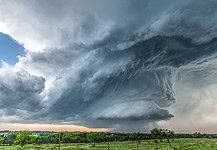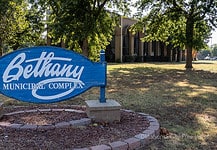Last Updated on January 25, 2024, 11:55 AM | Published: January 25, 2024
OKLAHOMA CITY — The annual Point In Time Count of those who are experiencing homelessness in OKC started around 3 AM Thursday and will conclude some time later in the day.
The City of Oklahoma City and the OKC Homeless Alliance organize the annual survey where teams of volunteers and employees from homeless service providers will visit shelters, hot meal programs and encampments to count and survey people experiencing homelessness.
Communities that receive funding from the federal Department of Housing and Urban Development (HUD) are required to conduct this survey at least once every two years showing at one point in the year how many persons experiencing homelessness there are in a city that desires to receive the federal funds.
Oklahoma City has historically conducted their survey annually in order to keep better track of the population, which is very mobile and shifts in numbers monthly.
The survey helps local service agencies identify trends, coordinate services and plan housing programs to better help people end their homelessness.
The camps this year
As they arrived back at the Homeless Alliance headquarters Thursday morning, Free Press interviewed some of those who went out into the outdoor camps in the dark early hours of Thursday, the day of the count.
The Homeless Alliance Executive Director Dan Straughan went out with teams that met at 3 AM to fan out across the metro to known homeless camps to catch those individuals before they started moving about.
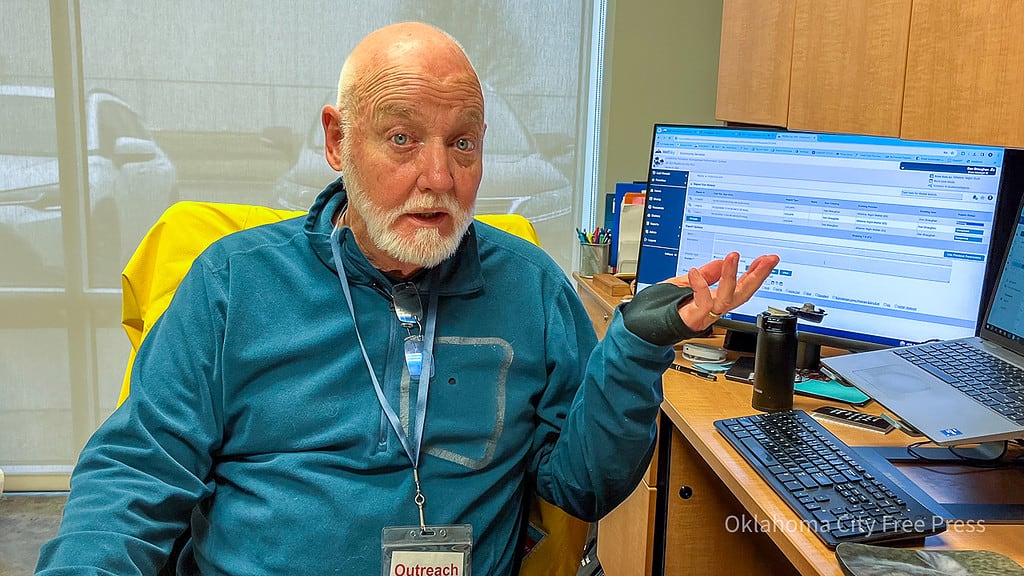
We asked Straughan what’s different this year from past years?
“The big difference this year is we have the winter shelter,” he said. “It’s been running, you know, 315 every night. And those folks would normally have been, you know, somebody that we count in a campsite somewhere.”
And, while it probably has not made much of a dent in this year’s camp count, the Key to Home program of transitioning homeless persons into permanent housing is intended to reduce the numbers of people living outdoors.
Jesse Andersen, who is on the staff at the Homeless Alliance went out with a team at 3 AM.
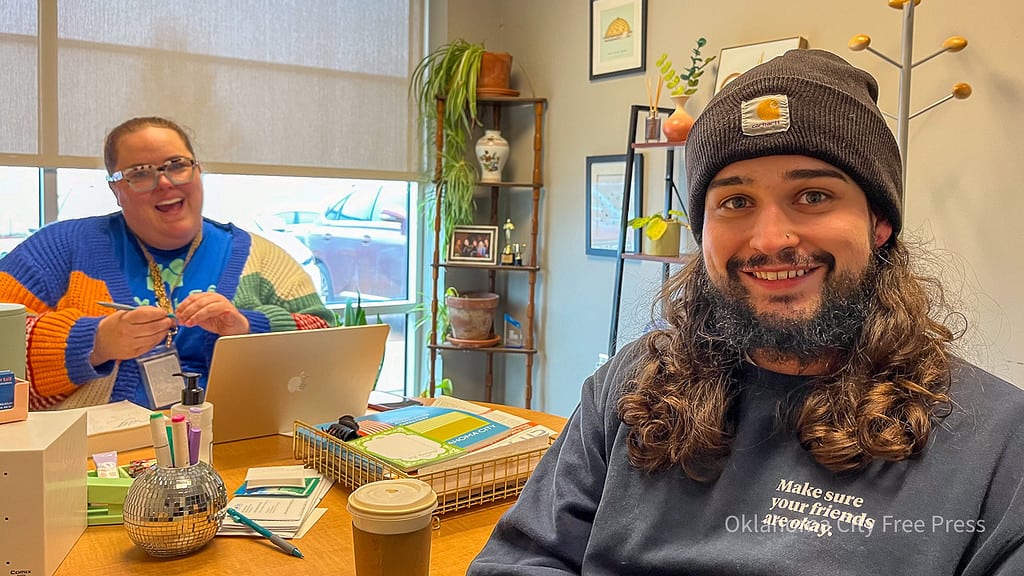
Andersen told Free Press that as the team he was on surveyed several camps he noticed a difference from the last two years in that there are more people with handicapping conditions or heavy medical vulnerabilities.
“We did see some medically vulnerable clients today,” said Andersen. “One had a walking boot and and had crutches and another one was using a cane and was carrying all of her belongings on her back.”
With a full day shelter by about 9 AM, volunteers were also helping with the count there.
Oklahoma City Councilmember JoBeth Hamon and Chuck Longacre were at a table interviewing those who would agree to it in the shelter.

Otis Hall sat down for the survey. He said that he is from Michigan and had a falling out with a fellow driver for the trucking company he worked for. In a series of events branching from that he now found himself on the street in Oklahoma City and was in the day shelter trying to find a way forward.
New digital tools
Volunteers met for training at Northcare near the OKC Fairgrounds Wednesday afternoon for training.
It’s an annual event that brings together people of like concerns. In some ways, the camaraderie was similar to an annual reunion of friends.
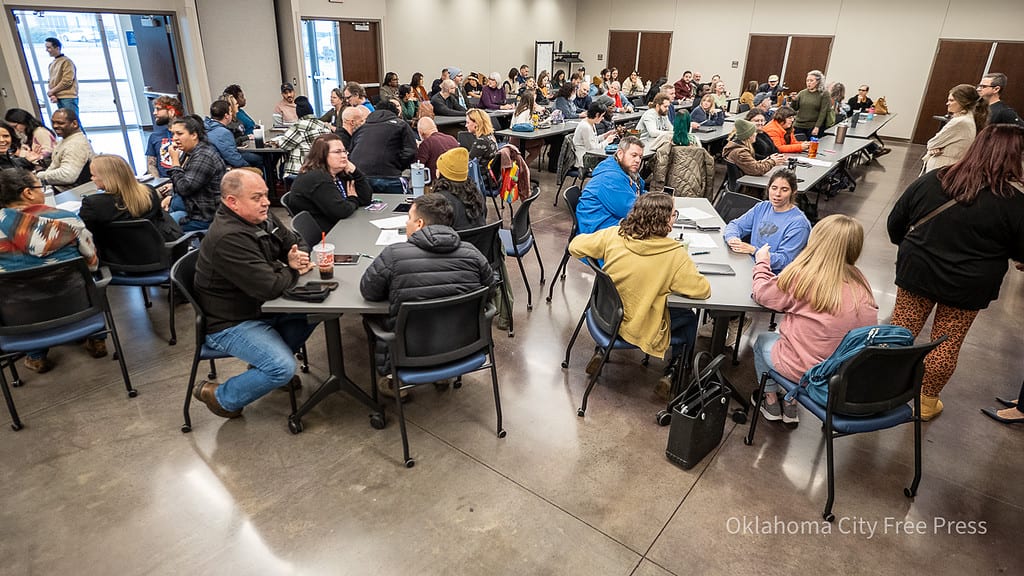
The training was different from years past in that a new digital system of reporting is being rolled out this year.
Volunteers doing the count will take iPads with them into the camps and shelters in order to record the numbers they find. Then, those reports will be uploaded to a server for collecting a total count.
In years past, volunteers had to use paper forms and clipboards as they went out and then turned them into a room full of people typing in the count to upload.
Adi McCasland came to the training for a second year of volunteering with the count. Why did she come back a second year?
“It was great last year,” she told Free Press.
We asked if it was as scary as some imagine.
“I found it to be fun and valuable,” said McCasland. “I loved interacting with the people we were interacting with and the teamwork that was involved.”
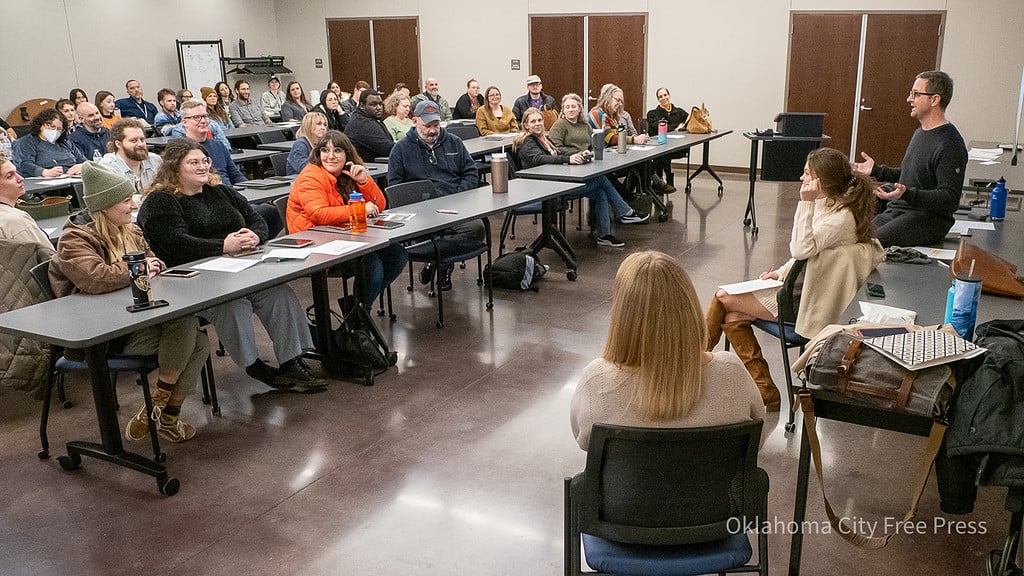
Jerod Shadid, program planner for the City of Oklahoma City’s Homeless Services, has spent the past weeks getting the new system in place and tested. When Free Press talked to him minutes before the training began on Wednesday, he was confident the system was ready to go.
“There’s always some knucklehead who’s going to screw something up, but I can’t get around that,” said Shadid with a smile. “We’ve gotten it just about as clear as I think we can do it.”
Results of the count will be compiled, analyzed and released later this year.
Why January?
The usual thinking among planners and service providers across the U.S. as well as staff at HUD believe that the best time to catch persons who live outdoors and in shelters for the homeless is when the weather is the coldest which slows movement around a city in the early morning hours.
People who live outdoors in tents typically do not get out early when the weather is very cold. Thus, the volunteers’ 3 AM start where they go first to the camps that police and volunteers who work with the homeless year-round have identified.
The same is somewhat true of those who are in overnight shelters. However, staff of shelters are trained in how to conduct the surveys with those who have been in overnight before they leave, and so there is less urgency to get to those facilities quite so early.
Homelessness in OKC
Last year’s survey — the 2023 Point in Time Count — found 1,436 people experiencing homelessness in Oklahoma City on the day of the count. That represented a slight increase from the year before.
Providers in OKC put that in perspective, comparing those numbers to the national numbers.
“The increase in Oklahoma City’s homeless count from 2022 to 2023 was 6.7%, while nationally homelessness increased 12%,” said Dan Straughan, Executive Director and Founder of the Homeless Alliance.
“Any increase in homelessness is bad news, but Oklahoma City service providers, in partnership with municipal government, the faith community and thousands of compassionate citizens will continue to innovate, invest and collaborate to end homelessness in our community,” Straughan said.
Founder, publisher, and editor of Oklahoma City Free Press. Brett continues to contribute reports and photography to this site as he runs the business.


